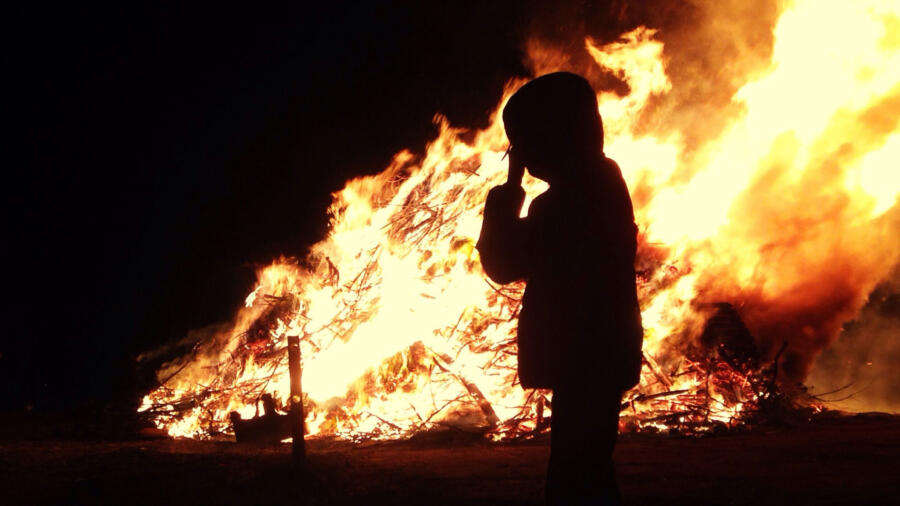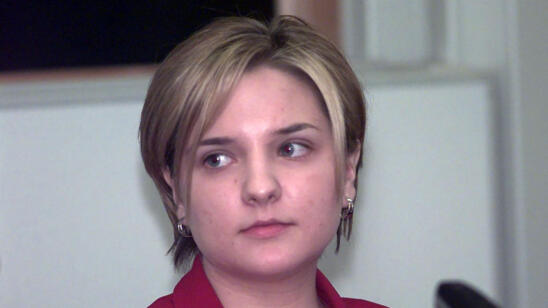On August 20, 1999, 11-year-old Miriam White flew into a rage when one of her family members gave her grief for letting a cat out of the house. Fleeing her Philadelphia home with a kitchen knife, she spotted Rosemarie Knight, 55, walking her dog. Without saying a word, White stabbed Knight in the heart, killing her.
Although White was only 11 years old at the time, and had a history of psychiatric problems, a local judge ruled that she be tried as an adult. The preteen defendant pleaded guilty to third-degree murder and possession of an instrument of crime, and was sentenced to 18 to 40 years in prison. She remains incarcerated to this day.
White’s sentencing made her the youngest “adult” murderer in Philadelphia’s history.
Had she grown up elsewhere in the United States, though, she might have faced a far less punitive sentence. In April 2004, 8-year-old Amy Yates of Carrollton, Georgia was strangled to death. A juvenile court convicted 12-year-old Johnathon Adams for the crime based on the strength of his confession. But unlike White, Adams received only two years imprisonment—the then-maximum sentence in the state for a juvenile.
(Adams would also later be exonerated of the crime.)
[Stream episodes of Accused: Guilty or Innocent? in the A&E App.]
There are significant differences between adult court and juvenile court. In most states, juvenile court jurisdiction ends at age 21 or 23, triggering automatic release, regardless of the crime committed; and—unlike with the adult criminal justice system—in most states, juvenile records are sealed and/or expunged.
White got a harsher treatment, despite being a year younger than Adams. And when it comes to the decision by courts to try child defendants as adults or juveniles (or to not try them at all), “the states are basically free to set these ages as they choose,” Marsha Levick, the chief legal officer at the Juvenile Law Center, a nonprofit public-interest law firm for children, tells A&E True Crime.
In 33 of the 50 states, there’s no minimum age for prosecuting child offenders, which Levick says “literally means you could prosecute a three-year-old.” In the states that do specify a minimum age, children can face juvenile imprisonment starting between the ages of 6 and 10, depending on the state. But even in states with a minimum age, many create an exception for murder, leaving it to the courts to decide the most brutal scenarios on a case-by-case basis.
For cases in which adults are charged with offenses committed as a juvenile, a number of factors will determine how the case will be handled in court: age at the time of crime, age at the time of arrest and severity of crime. In the case of Angel Bumpass, who is featured on A&E’s Accused: Guilty or Innocent?, the Kentucky woman was charged at the age of 23 with a crime that occurred when she was 13—the murder of a 68-year-old man, Franklin Bonner. A pre-trial hearing determined she would be charged as an adult.
What Constitutes Too Young to Jail?
While the letter of the law gives individual states the flexibility to put preadolescent children into juvenile detention, Levick says, “these [cases] are very rare, and the reason they capture our attention is because they are so unusual… If you have an eight-year-old who is charged with some type of extreme aggressive or violent behavior, it will—in most cases—be referred to the child-welfare side of the courts,” rather than to juvenile justice.
Child welfare means that the court can “remove the child from home, and place the child—not in a delinquency setting, but in a child-welfare setting,” Levick says, where adult supervision is offered, but the violent offender isn’t implicated with criminal responsibility and isn’t burdened with any form of criminal record.
Nell Bernstein, a journalist who investigated juvenile prisons for her book Burning Down the House, says that in her interviews with “close to 100” current and former juvenile inmates, she doesn’t recall meeting anyone who had been incarcerated at an age younger than 10 years old.
“When you take somebody and lock them up in a room, when you sever all their connections—that’s counter to everything we know about childhood development,” Bernstein says.
Levick, similarly, doesn’t remember any juvenile offenders being sent to detention any younger than 11 years old.
Barbara Burns, a professor of psychiatry and behavioral sciences at the Duke University School of Medicine, says there’s a strong (and intuitive) developmental argument against the incarceration of especially young children: They don’t know that what they’re doing is wrong.
According to Burns, children don’t “begin to learn right from wrong…and really have a conscience” until “seven or eight years old, at the earliest.” Thus, it’s hard to make the legal case that a young child has knowledge of their wrongdoing, i.e. criminal intent—often a key component in determining criminal culpability.
In other countries’ legal systems, especially young children can rely on the “defense of infancy.” Most jurisdictions in the United States have done away with that defense, under the logic that the juvenile court system is itself a defense for American children, in that it shields them from facing the more punitive criminal justice system of the adult courts.
How Many Children Actually Murder?
Nationwide research into homicide committed by young children is scant, but a 2017 study suggests that the rate of incidence is extremely low. According to the researchers, an estimated 74 American children aged 0 to 14 commit murder in a given year. Three-quarters of those are committed by 13- and 14-year-olds, meaning that there are fewer than 20 homicides committed by preteen youth in a given year, according to estimates by the study’s authors.
But as long as that number remains higher than zero, communities continue to grapple with the best course of action.
Burns says reform models for these children, “should be community-based. It has to be family-based.”
Bernstein, whose book argues for the elimination of the juvenile-detention system entirely, concedes there will be “situations where what’s best for the kid and what the community needs to be safe might not be the same thing. And those are super difficult.”
Still, she says that there are warning signs with violent children, and that early intervention is key. “I’ve never met a child whose first crime was double homicide.”
Related Features:
Watch Episodes of ‘Accused: Guilty or Innocent?’
The Offenders Behind 3 Court Cases That Changed Lifetime Imprisonment Laws for Juveniles
Watch ‘Kids Behind Bars: Life or Parole’


